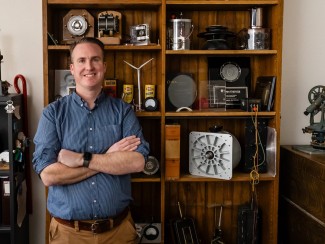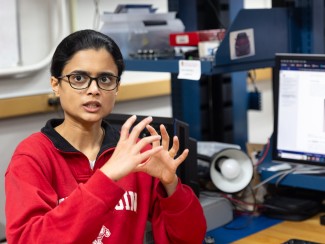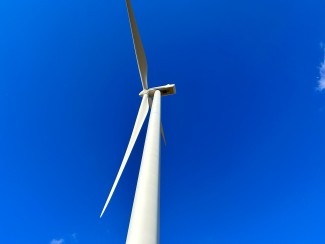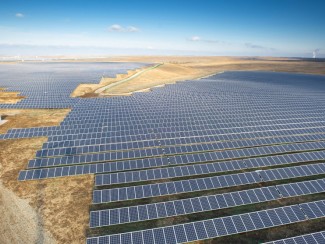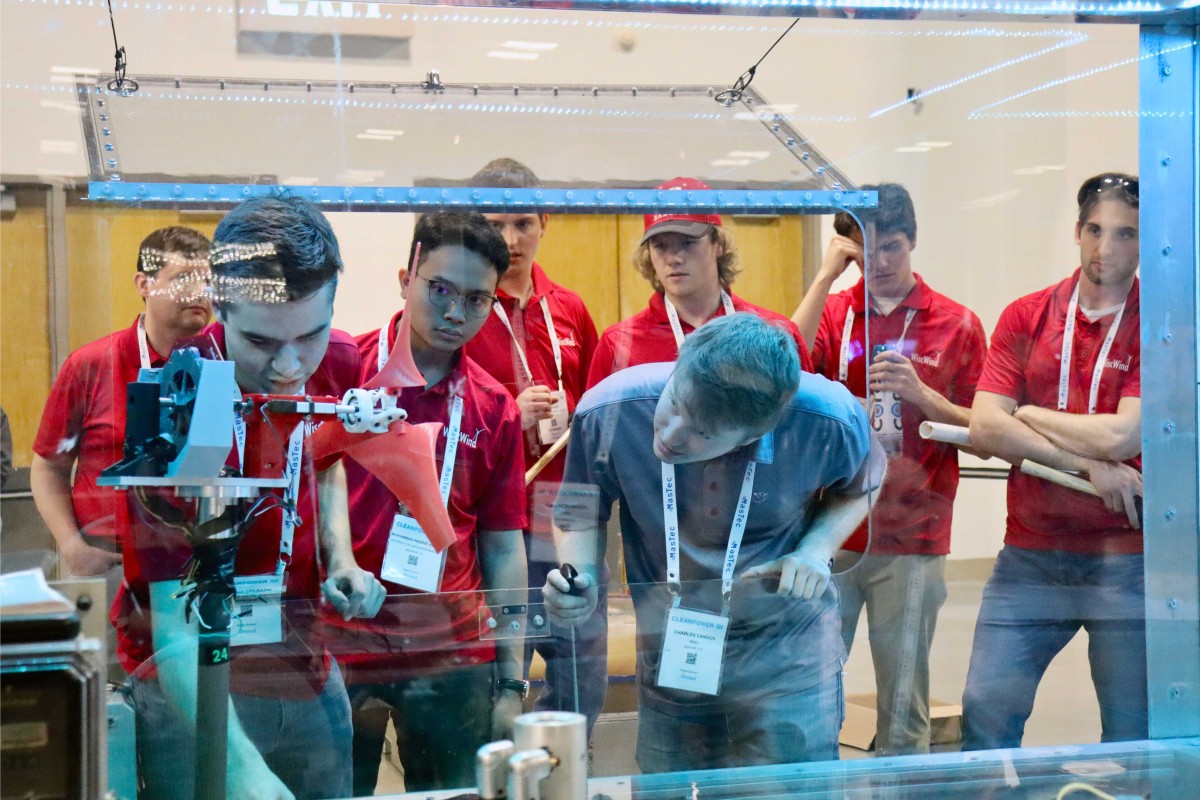
Winds on the Great Lakes could provide more than enough clean energy to meet the needs of the eight bordering states, yet logistical, social, and environmental challenges have stymied development of offshore wind turbines.
Now a group of students from the University of Wisconsin–Madison has shown how one offshore project could help Michigan clean up its electricity supply.
The university’s WiscWind team’s proposal for a 525-megawatt floating wind farm on Lake Michigan won the project development contest in the U.S. Department of Energy’s 2024 Collegiate Wind Competition, in which teams of undergraduates develop a wind energy project and design, build, and test a model wind turbine.

The contest required teams to come up with an offshore wind project in Lake Michigan or Superior that included a complementary generation or storage technology.
According to the National Renewable Energy Lab (NREL), the Great Lakes could potentially host 575,000 megawatts of wind generation capacity, generating more than three times the electricity currently used by all eight bordering states.
Yet challenges – including freshwater ice, environmental and social conflicts, and locks too narrow to accommodate the massive ships used to install offshore wind turbines – have deterred development. Late last year the developer of what would have been the first freshwater wind farm in North America put the project on hold amid rising costs and legal challenges.
WiscWind’s hypothetical plan calls for 35 turbines anchored 34 miles off the Michigan coast connected to a battery storage system at the site of a 1,400-megawatt coal-fired power plant slated for retirement.
Claire Lesnjak, a third-year chemical engineering major pursuing certificates in environmental studies and engineering for energy sustainability, led the eight-person project development team, which spent roughly a year evaluating potential sites and technologies, developing a business plan, and plotting a course through a years-long permitting process.
Lesnjak said the first step was using GIS software to find a location that offered good wind speeds but minimized environmental, cultural, and economic conflicts.
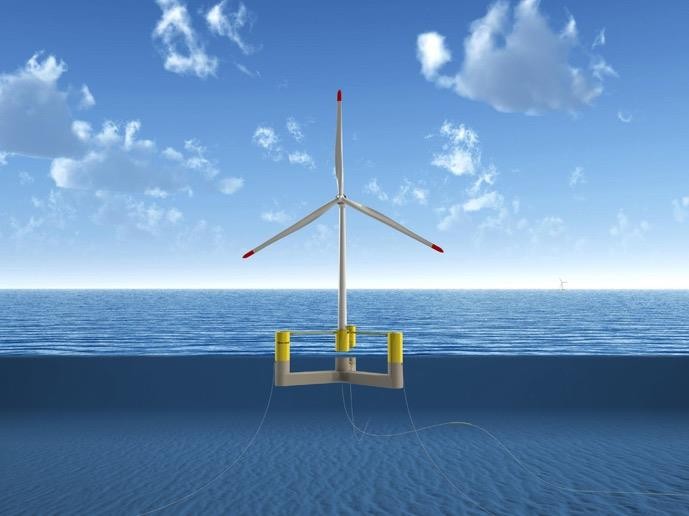
Because of the depth of the chosen site, the team selected floating turbines, which would be mounted on concrete hulls tethered to suction piles – essentially open-bottomed canisters driven into the lakebed – avoiding the need for those oversized ships.
While the site is essentially in the middle of Lake Michigan, Lesnjak said Michigan’s aggressive clean energy mandates and recent permitting reforms made it the logical choice for where to send the power.
Consumers Energy’s JH Campbell power plant, situated about 22 miles west of Grand Rapids, is scheduled to shut down in 2025, which Lesnjak said would be an ideal place to connect the project to the grid and install a lithium-ion battery storage system, to be built and operated by the utility.
“The capacity is going to need to be replaced somehow,” Lesnjak said. “This is going to be a proven technology. It's already risky enough that we have our wind farm in the Great Lakes (and) it's going to have to be floating.”

Though the project would cost a whopping $3 billion to build, the team estimates it would generate an 11% return on the investment if Consumers Energy purchased the power for $123 per megawatt hour, only slightly more than the utility pays for electricity from current land-based wind turbines.
Lesnjak, who joined the team in her first week on campus, said she learned a lot about wind energy through the experience but also about finance, project management, and leadership. She was only a little nervous presenting the proposal to wind industry leaders.
“I feel like we prepared really well,” she said. “And we were, you know, ready to show the judges we meant business.”
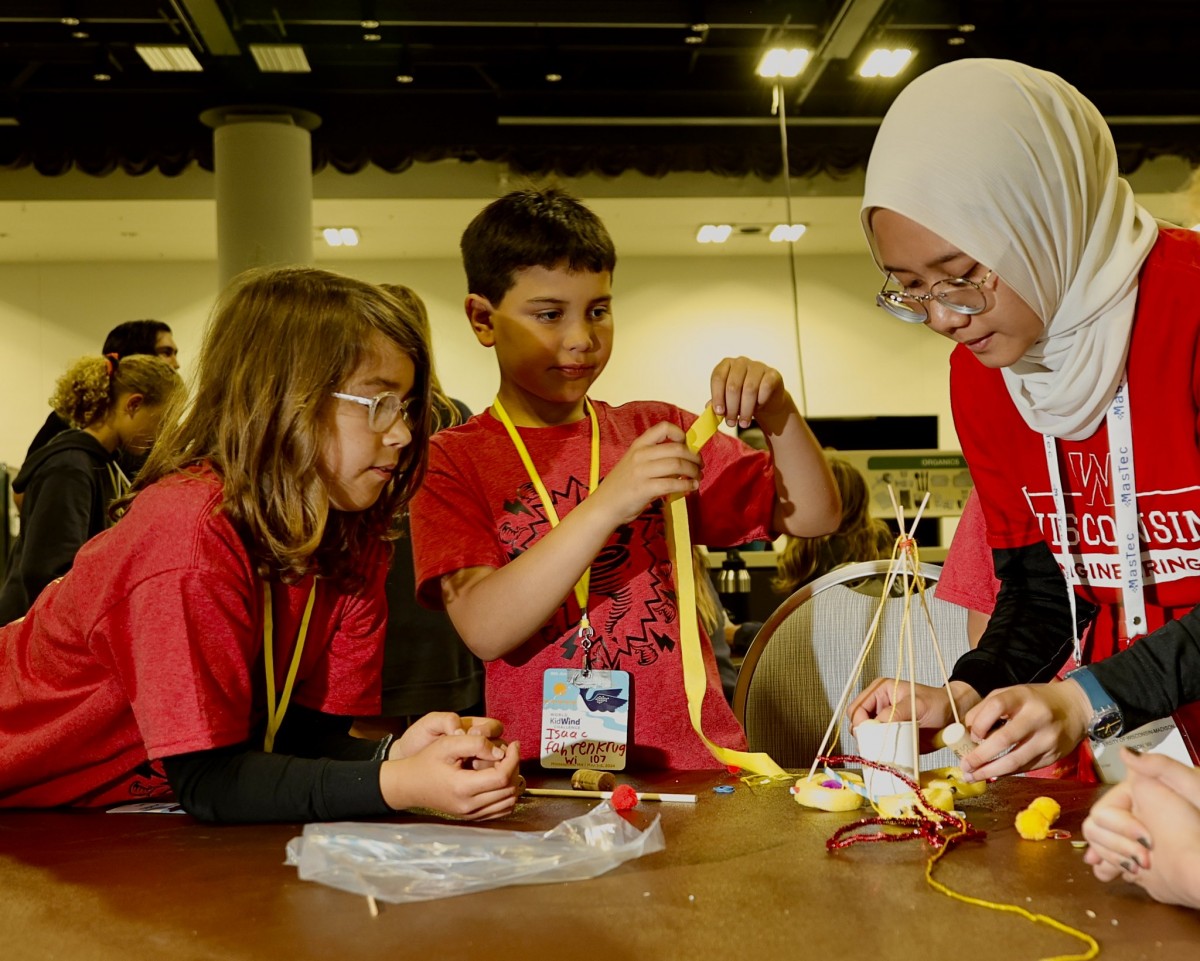
Lesnjak said she would love to see an energy company actually develop the plan, though she thinks real-world challenges would make the 2033 in-service date difficult to meet.
“Personally, I don't think it can happen in the timeline we gave,” she said. “I guess it would be kind of cool.”
This was the ninth straight year that the WiscWind made it into the final round of the annual competition, which aims to prepare college students for jobs in the wind energy workforce through real-world experience.
WiscWind was one of only two teams – including the overall winners – to design and build their own generator, a swing-for-the-fences approach that team leader Josh Delgado said would have likely landed them on the podium except for an unforeseen voltage problem that caused the control system to malfunction during the May 6-9 competition in Minneapolis.
“When we left, everything was working perfectly,” said Delgado, a senior studying mechanical engineering. “It wasn’t exactly the ending we hoped for, but at the end of the day it was a learning opportunity.”

